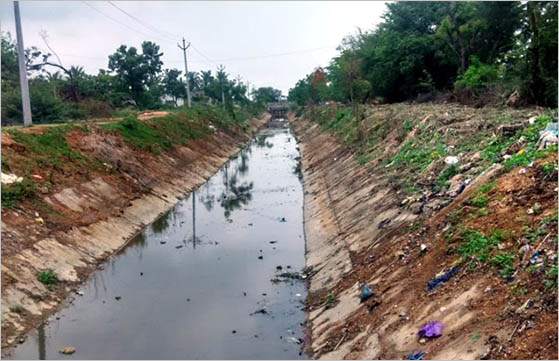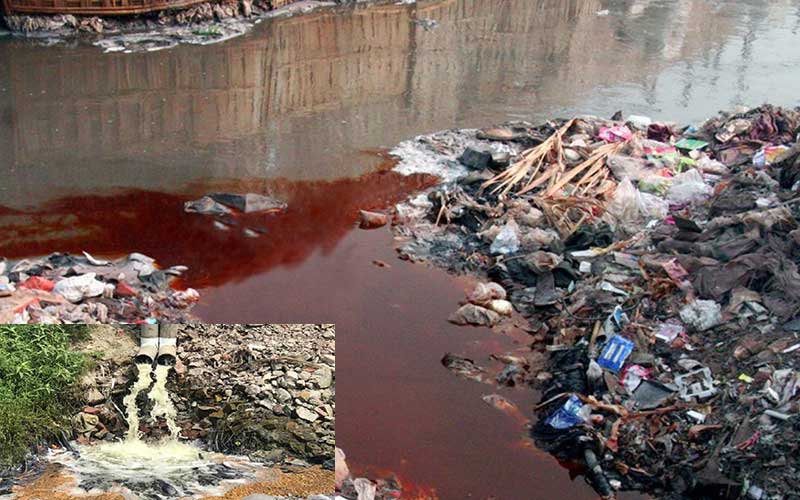Comprehensive Liquid Waste Disposal: Solutions for Homes and Companies
Comprehensive Liquid Waste Disposal: Solutions for Homes and Companies
Blog Article
Comprehending the Comprehensive Process of Liquid Waste Disposal: Best Practices and Environmental Influence Factors To Consider
The monitoring of liquid garbage disposal is a diverse problem that needs a detailed understanding of various finest practices and their associated ecological impacts. From the kinds of fluid waste created to the approaches utilized for collection, treatment, and last disposal, each step plays a critical role in safeguarding environments and public health and wellness. As regulative requirements advance and technology advancements, the discussion around these procedures ends up being increasingly pertinent. What ramifications do these adjustments hold for future sustainability efforts, and how can stakeholders make sure that they are effectively attended to?
Kinds Of Fluid Waste
Recognizing the numerous types of fluid waste is vital for efficient management and disposal techniques. Fluid waste can be broadly categorized into a number of types, each calling for distinct handling and treatment approaches.
Industrial liquid waste typically includes harmful products, including heavy steels, solvents, and chemicals, created throughout making procedures. These wastes require rigorous regulatory compliance to secure human health and wellness and the environment. Domestic liquid waste primarily describes wastewater produced from households, consisting of sewage and greywater, which, although much less poisonous, can still posture substantial risks if improperly managed.
Agricultural fluid waste, including drainage from ranches, commonly consists of fertilizers and chemicals that can cause ecological deterioration if not treated effectively. Clinical fluid waste, generated from health care facilities, consists of contaminated fluids such as bodily fluids and chemicals, needing specialized disposal techniques to stop infection and environmental contamination.
Last but not least, oil and grease waste, usually created by restaurants and automotive markets, can cause extreme obstructions in sewer systems otherwise handled appropriately. Understanding these groups assists in targeted approaches for treatment, conformity with policies, and reliable disposal approaches, eventually advertising environmental sustainability and public health safety.

Collection Techniques
Effective collection methods are crucial for the appropriate monitoring of fluid waste, making certain that it is gathered safely and successfully before treatment or disposal. Various techniques are employed depending upon the sort of fluid waste created, the quantity, and the particular features of the waste.
One common method is the usage of specialized collection containers or sumps, which are created to capture liquid waste at the source. These systems usually integrate pumps that facilitate the transfer of waste to larger storage containers or therapy facilities. In addition, mobile collection devices geared up with vacuum cleaner innovation are utilized in scenarios where waste is produced periodically or in hard-to-reach areas.
For industrial setups, closed-loop systems can efficiently reduce leaks and spills, permitting the healing and reuse of fluid waste. It is additionally necessary to educate employees on proper collection methods to reduce dangers linked with dangerous compounds.
Moreover, executing regular upkeep schedules for collection devices makes sure optimum performance and safety and security. The integration of advanced monitoring systems can boost collection performance by giving real-time information on waste degrees and possible dangers. On the whole, effective collection techniques are fundamental to sustainable liquid waste monitoring practices.
Therapy Procedures
Therapy processes play a vital role in the management of fluid waste, changing possibly unsafe products right into secure effluents or reusable sources - liquid waste disposal. These processes can be extensively categorized right into physical, chemical, and organic methods, each tailored to deal with particular contaminants existing in the waste stream
Physical treatment techniques, such as sedimentation and filtering, job by eliminating put on hold solids and particulate matter. These methods are often the initial step in the treatment chain, properly reducing the load on subsequent procedures. Chemical therapies entail the usage of reagents to neutralize damaging compounds, speed up hefty steels, or oxidize natural toxins, consequently improving the safety and security of the effluent.
Biological therapy processes, including turned on sludge systems and anaerobic food digestion, take advantage of the all-natural abilities of microorganisms to break down natural issue. These techniques are particularly efficient for wastewater containing biodegradable toxins. Advanced therapy click for more info technologies, such as membrane filtration and advanced oxidation procedures, are significantly employed to attain greater levels of filtration.
Integrating a mix of these therapy approaches not only makes certain conformity with regulative requirements yet also promotes environmental sustainability by recouping beneficial sources from fluid waste.
Disposal Options
How can companies guarantee the risk-free and responsible disposal of fluid waste? Efficient disposal alternatives are critical for protecting public health and the environment. The primary approaches consist of land disposal, incineration, and therapy complied with by discharge right into community wastewater systems.
Land disposal includes the careful containment of liquid Visit Your URL waste in marked land fills, making certain that it does not seep into bordering dirt or water. Incineration, on the various other hand, subjects fluid waste to high temperature levels, transforming it right into ash and gases, which require appropriate purification to reduce emissions. This technique is suitable for unsafe wastes that can not be treated with standard means.
In cases where fluid waste can be treated, companies might select biological or chemical therapy processes to neutralize damaging parts before releasing the dealt with effluent right into metropolitan systems. This route normally straightens with regulatory demands, making sure that the effluent satisfies safety and security requirements.
Inevitably, organizations must carry out comprehensive evaluations of click here for more each disposal alternative to determine its viability, considering elements such as waste make-up, regulative compliance, and possible dangers to wellness and the atmosphere. By selecting proper disposal methods, companies can add to an accountable waste monitoring technique.
Ecological Impact
The environmental effect of fluid waste disposal is a vital factor to consider for organizations looking for to lessen their environmental footprint. In addition, the discharge of untreated or inadequately treated waste into surface area waters can result in eutrophication, leading to oxygen deficiency and the subsequent death of fish and other microorganisms.

To reduce these impacts, organizations must adopt best techniques such as implementing rigorous waste treatment processes, promoting recycling and reuse, and adhering to regulatory standards. By taking a positive method to liquid waste administration, entities can considerably minimize their environmental impact while sustaining sustainable advancement objectives. Eventually, a detailed understanding of the environmental influences related to liquid garbage disposal is crucial for informed decision-making and accountable stewardship of natural deposits.
Conclusion
Reliable monitoring of liquid waste is critical for protecting ecological honesty and public health. By taking on finest techniques in collection, disposal, and treatment, alongside adherence to governing criteria, the potential for hazardous contamination of communities can be dramatically decreased. Continual advancements in modern technology and procedures contribute to sustainable waste administration initiatives. Eventually, a detailed understanding of fluid garbage disposal not only minimizes environmental effects yet also fosters a dedication to liable resource monitoring and ecological stewardship.
The administration of fluid waste disposal is a complex concern that requires an extensive understanding of numerous ideal practices and their associated environmental effects. From the types of liquid waste generated to the approaches employed for collection, treatment, and last disposal, each action plays an essential duty in safeguarding ecosystems and public wellness.The environmental impact of fluid waste disposal is a vital consideration for companies seeking to lessen their environmental impact. Eventually, a detailed understanding of the environmental effects linked with liquid waste disposal is necessary for notified decision-making and responsible stewardship of natural resources.
Eventually, a detailed understanding of fluid waste disposal not just alleviates environmental effects but additionally cultivates a dedication to liable resource management and ecological stewardship.
Report this page